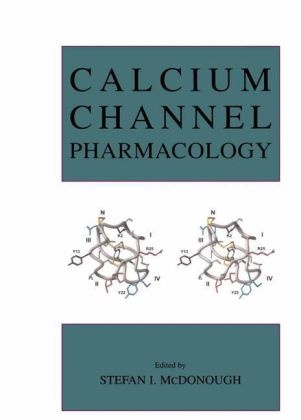Read more
This volume reviews the current ability, future prospects, and physiological and medical significance of being able to distinguish pharmacologically among different calcium channel subtypes. Chapters are organized around broad concepts addressing the state of the field that naturally cover the pharmacology of each different calcium channel. Mechanistic information on drug-channel interactions is also presented in several chapters, as a theoretical and practical guide to working with calcium channel blockers in general.
List of contents
Introduction; S.I. McDonough. Concepts of State-Dependent Pharmacology of Calcium Channels; E.N. Timin, S. Berjukow, S. Hering. Pharmacology of Ca v 1 (L-Type) Channels; D.J. Triggle. The Therapeutic Utility of Targeting Ca v 2 Channels; C.J. Cohen, R.L. Kraus. Peptide Toxin Inhibition of Voltage Gated Calcium Channels: Selectivity and Mechanisms; S.I. McDonough. Calcium Channel Blocking Polypeptides: Structure, Function, and Molecular Mimicry; R.S. Norton, J.B. Baell, J.A. Angus. Pharmacology of Ca v 3 (T-Type) Channels; E.A. Ertel. Cellular Functions of Calcium Channel Subtypes; E.S. Piedras-Rentería, P.G. Mermelstein, G.S. Pitt. Genetic Approaches to the Elucidation of Calcium Channel Functions in Vivo; H. Saegusa, T. Tanabe. Calcium Channel Mutations and Associated Diseases; Y. Mori, Y. Itsukaichi, M. Nishida, H. Oka. Modulation of High Voltage-Activated Calcium Channels by G Protein-Coupled Receptors; A.M. Beedle, G.W. Zamponi. Alternative Splicing in Voltage Gated Calcium Channels; D. Lipscombe, A.J. Castiglioni. Index.
Summary
Voltage-gated calcium channels are critical regulators of cytoplasmic levels of calcium, the universal signaling ion. As such, calcium channels trigger a wide range of cellular functions, from muscle contraction to neurotransmitter secretion, and are important players in human disease. Prominent in the nervous, cardiovascular, and endocrine systems, members of the calcium channel family are targets for existing antihypertensive and anticonvulsant drugs. In addition, they are emerging targets for drugs to treat an extraordinarily diverse group of disorders, including pain, cerebral ischemia, cardiac arrhythmia, and migraine. This book reviews the compounds that target individual calcium channel subtypes and the cellular and behavioral functions governed by each different channel. It contains information for basic scientists using calcium channel antagonists as experimental tools, for behavioralists studying animal models of human disease, and for pharmaceutical scientists interested in creating the next generation of calcium channel-targeted drugs. Several factors make an entire book on calcium channel pharmacology timely.

